University of Houston’s Public Art Power Puts it at Forefront of U.S. Universities
A Legacy of 50 Years of Collecting and a New Drive (and Curator) is a Combination That's Hard to Beat
BY Catherine D. Anspon // 10.02.19Brian Tolle’s "Origin," 2014, at the University of Houston
With a milestone half-century anniversary and the launch of a new temporary public art program, the University of Houston System stakes a claim to be one of America’s top art collecting institutions. This is the first story in a series.
In hindsight, 1969 would have seemed an improbable year for a fledgling state university to take the bold step of collecting art. It was the finale of a decade marked by more than the moon landing — there was campus unrest nationally, turbulent protests swirling around the Vietnam War, violence against the soldiers of the Civil Rights movement, and the assassination of JFK, Martin Luther King Jr. and Robert Kennedy.
Nonetheless, this was the moment when collecting and commissioning public art at the University of Houston began.
Was it to posit a positive response to an uncertain time?
Spurred by a spate of new buildings for the rapidly expanding campus of a booming city, then-president Philip Hoffman and the board of regents launched an innovative Percent for Art program, where one percent of all construction costs were allotted towards acquiring works of art.
The impetus was novel — the first one in the state — and set a precedent that prompted the Texas legislature to pass a bill that made this program a part of all public university campuses statewide.
Flash forward 50 years, and the University of Houston System is the steward of a collection of nearly 700 artworks on view throughout its five campuses — the original University of Houston on Cullen Boulevard, as well as at UH’s Clear Lake, Downtown, Sugar Land and Victoria campuses.
The holdings include international, national, Texas, and Houston-based artists.
Under the leadership of Chancellor Renu Khator, the public art program has garnered increasing emphasis and visibility, birthed a new moniker and mantra — Public Art of the University of Houston System (Public Art UHS), democratically branded as Exclusively for Everyone — and appointed its first director/chief curator, Dr. María C. Gaztambide.
The new hire, by all accounts, is tenacious and brilliant, combining academic credentials (over a decade at the Museum of Fine Arts, Houston) and a dynamic leadership style.
With longtime curator Michael Guidry, the duo continue the mission to commission prescient works that are both timeless and speak to our time — case in point, the University of Houston tapped Carlos Cruz-Diez for the Latin American master’s first permanent public art piece in the United States.
The snaking, sinuous Double Physichromie, 2009, is a 648-inch-long perambulating sculpture in painted aluminum and steel manifesting Cruz-Diez’s bold foray into color.
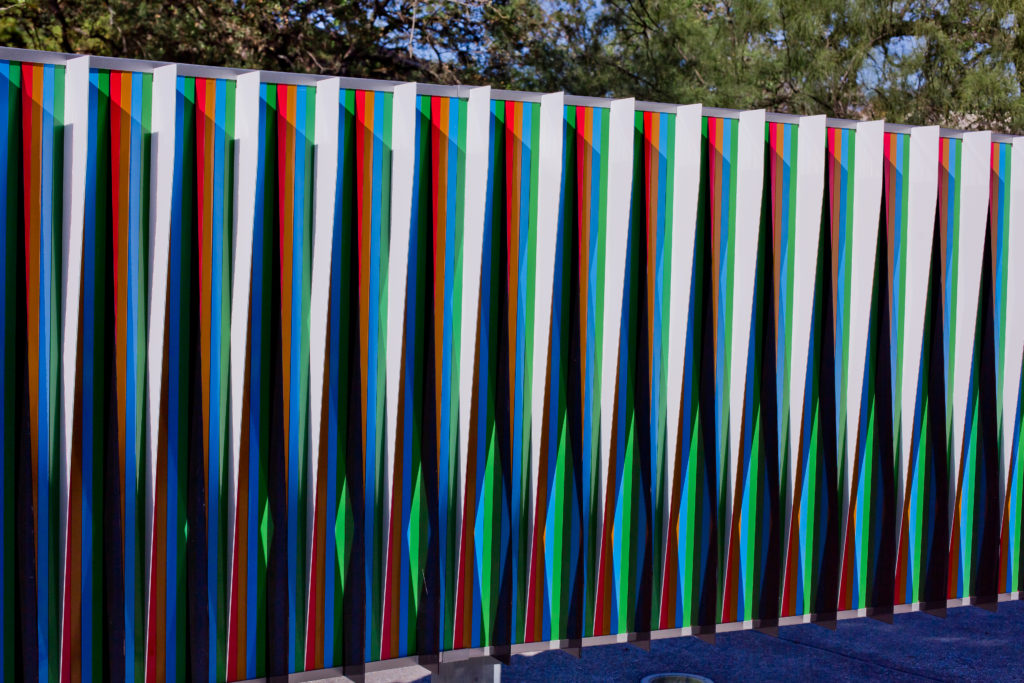
While Double Physichromie punctuates a plaza at UH, other works are of a more modest scale, such as the cache of Andy Warhol Polaroids, including an image of art star and UH grad Julian Schnabel; measuring 3 ¼ x 4 ¼ inches and dating from 1983. Schnabel and other Pop Polaroids are held in the University of Houston Libraries Special Collections.
It’s also important to note that from its founding, the UH System intuitively possessed a sensitivity to collecting from the standpoint of racial diversity and gender parity.
Nationally known talents who worked in Houston such as the late greats Dorothy Hood and Dr. John Biggers are represented by, respectively, an engaging color-field canvas edged in surrealism that bears a moody gray palette, The Angel’s Key, 1987, at UH, and the epic mural Salt Marsh, 1997, at University of Houston-Downtown.
The Guerilla Girls need not picket here: Included are seminal works by Texas and national artists Margo Sawyer (a stunning cascade of hand-painted stained glass, Synchronicity of Color: Victoria, 2018, for the UH Victoria campus) and Alyson Shotz (a symphony of suspended glass beads, A Moment in Time, 2005, in the Wortham Theatre lobby of the UH campus).
The collection encompasses artists hallmarked by high-profile exhibitions nationally who also call Texas home. These include Whitney Biennial-exhibited Luis Jiménez, the late UH art professor who “was and is considered the leading Hispanic sculptor of his generation,” says curator Clint Willour in the University of Houston’s first-ever collection catalog, which publishes this fall.
Jiménez is represented by the dynamic 10-foot-tall pas de deux Fiesta Jarabe (Fiesta Dancers), from 1991-1993, executed in the sculptor’s signature polychrome fiberglass, installed on a plaza of the UH campus.
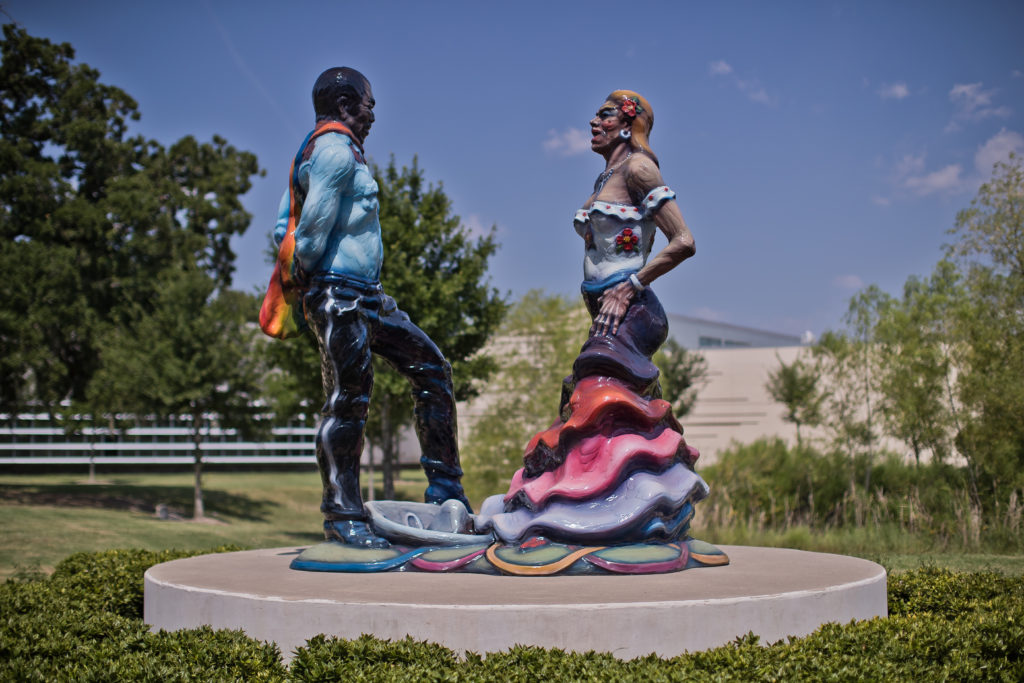
At University of Houston-Downtown, another Whitney Biennial talent holds court: Trenton Doyle Hancock, who lives and works in Houston but has shown extensively internationally. Hancock’s ink-on-acrylic 36-by-30-foot masterwork, LEGENDS, 2015, continues the artist’s comic-fueled cosmology, which addresses race in America.
No visit to the University of Houston campus is complete without one of the calling cards of its public art collection: Frank Stella’s grand baroque, multi-part mural Euphonia, 1997, which celebrated its 20th anniversary with great fanfare and programming two years ago, topped by the return to campus of its creator. Stella’s Euphonia ceiling cycle lends the Moores Opera House a spectacular flourish.
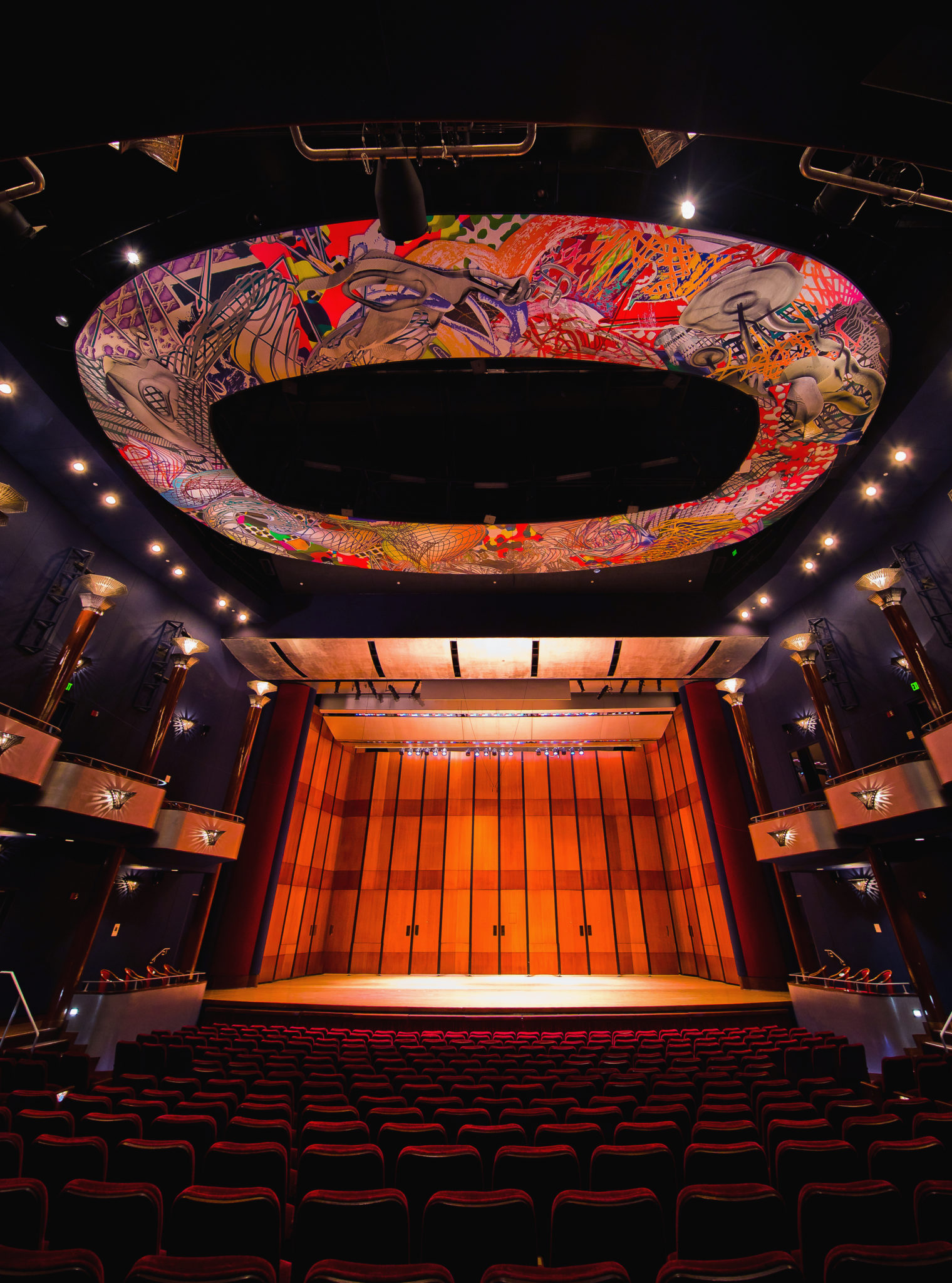
One of the works, which addresses Texas’ Native American population, is Brian Tolle’s Origin, 2014, which enlivens the façade of Cemo Hall at the UH Bauer College of Business. The two-part sculpture references a creation myth of the Karankawa tribe who once inhabited the Gulf Coast. Tolle’s work functions as a fountain during heavy rains, with water from a large oystershell-shaped cradle spilling upon a wigwam from above.
Another artist to single out in a collection that tilts to place-making sculpture is Pablo Serrano, an early addition to the University of Houston-Clear Lake campus. The Spaniard’s monumental bronze Spiritus Mundi, 1977, was installed the year it was made and numbers among the the artist’s most ambitious public commissions.
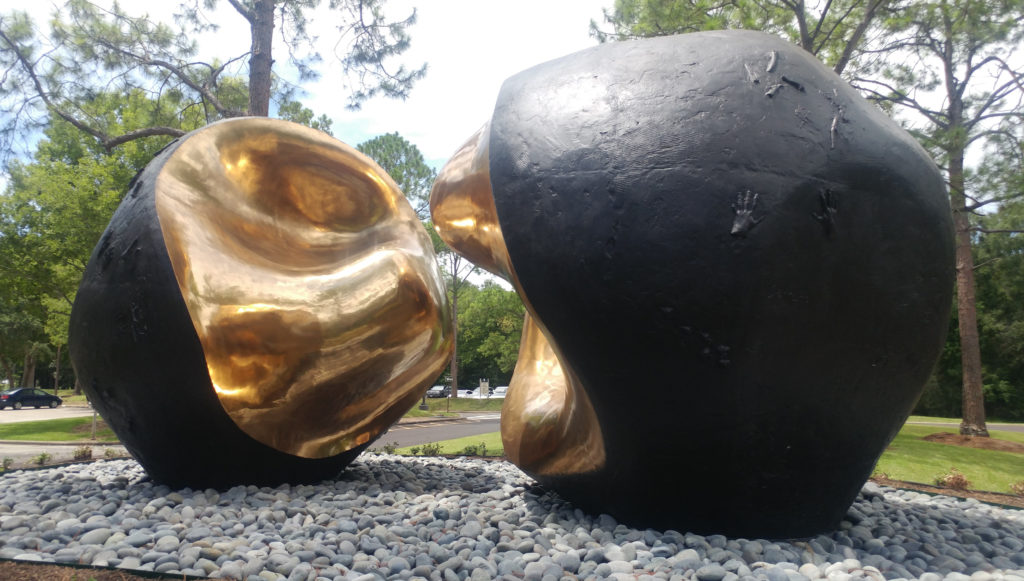
Fittingly for a campus near NASA, “Spiritus Mundi is evocative of both the physical and cosmic sense of space,” writes Public Art UHS director and chief curator Dr. María C. Gaztambide in the catalog On Site: 50 Years of Public Art of the University of Houston System.
Collectors, take note: On Site from Scala Arts Publishers releases this month ($60) and surveys the history and significance of works by 42 artists that define the ever-expanding collection.
A Party for Public Art: University of Houston’s evening in The Grove
Toast a half-century mark for one of the most significant university collections in the country. Wednesday, October 23, 6:30 pm, UH curates “On Site: 50 Years of Public Art of the University of Houston,” celebrating and benefiting Public Art UHS. The sylvan venue is Wilhemina’s Grove, which connects Blaffer Art Museum, Moores Opera House, Lyndall Finley Wortham Theatre and the Cynthia Woods Mitchell Center for the Arts.
Three power women chair: Beth Madison, Judy Nyquist and Beth Robertson. The evening honors an MFAH Core Fellow: two-time Whitney Biennial artist Houston-based Trenton Doyle Hancock, whose epic and intricate wall installation LEGENDS makes an impact at UH’s downtown campus.
The evening begins with cocktails and a strolling supper under the stars surrounded by art, music, and dance by UH students, as well as a showcase of the new Temporary Public Art Program. Dress in artful attire, with sensational sneakers; PaperCity is media sponsor. Tickets from $500; contact Ellie Francisco, 866.366.5274, ext. 101; ellie@franciscoandco.com.
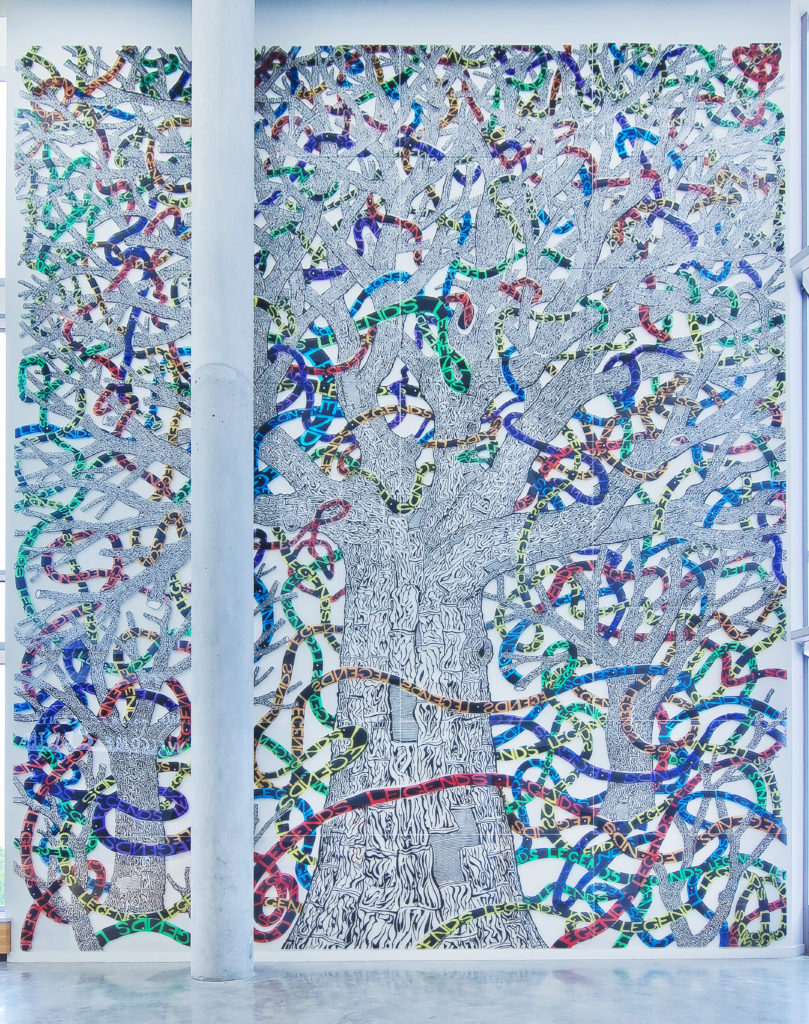
Look for the next story in the series on the temporary public art program at the University of Houston in the coming weeks.
All images courtesy the collection of Public Art UHS.

















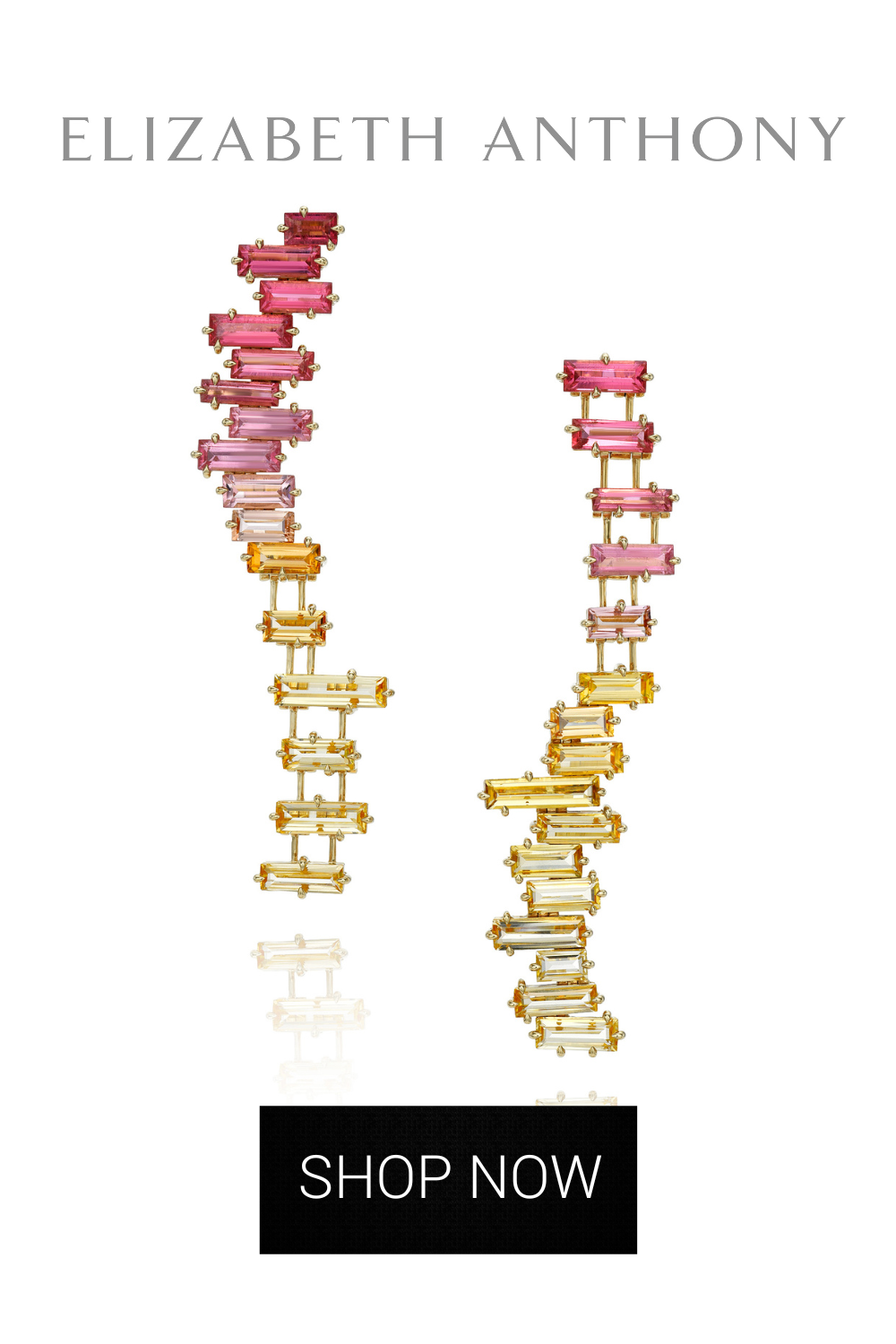







_md.jpeg)

















